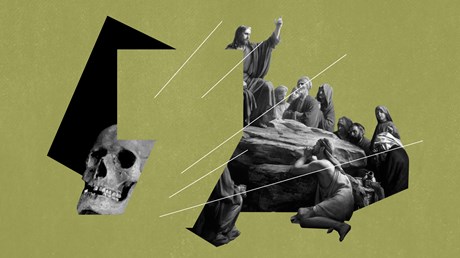As we search for meaning in the “blessings,” we must let them transform us.

The yellowing notebook for my college philosophy of religion class contains this plaintive inscription: Sunday school was never this complicated. Similarly, the Beatitudes are more complex than they first appear. They are (like all of Scripture) inexhaustibly rich. The deeper you dig, the more they yield.
It’s hard to say that a beatitude means anything apart from a context in which that meaning might be practiced, and apart from lives in which the Beatitudes might mean something. The Beatitudes are best understood in their wider narrative contexts in Matthew and Luke: They only make sense as part of a wider story about God and God’s Son, Jesus.
As Kavin Rowe writes, “We cannot understand the sense ideas or practices have apart from the stories that make them intelligible as things to think/do in the first place.”
Now I also want to make a case that the Beatitudes can be known most fully not by reading about them but through seeing what they look like in human lives. Perhaps it’s better to say not that the Beatitudes mean something but that they hope to transform someone, that they aim to transform us.
I didn’t expect to be changed by writing a book on the Beatitudes, but I was. I thought often about how I experience and express anger, whether I am a gentle person, how I spend money, how I treat people who are poor or homeless, when and how I pray, and whether I ever suffer for a commitment to justice. “How can one communicate the flame of the beatitudes,” wonders René Coste, “if one does not oneself burn?”
Christin Lore Weber writes of the Beatitudes:
If we approach their meaning through analysis we will fail to understand them. Instead we need to receive them ...
from Christianity Today Magazine
Umn ministry


.gif)

.gif)
.gif)
